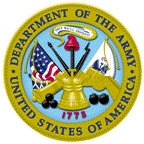United States Department of Defense
Document Type
Article
Date of this Version
2003
Abstract
Ecological risk assessment (ERA) guidance recommends that field-truthing efforts proceed when modeled hazard quotients (HQs) suggest that toxicological effects are occurring to site receptors. To date, no field methods have been proposed by the regulatory community that can lead to definitive determinations of acceptable or unacceptable risk for birds and mammals, the two terrestrial classes of receptors that are commonly assessed using the HQ method. This paper describes rodent sperm analysis (RSA) as a viable method to be applied in the field at sites with historical contamination. RSA is capable of detecting biological differences that bear on reproduction, a highly regarded toxicological endpoint of concern in USEPA Superfund-type ERAs. The results of RSA’s first application at a study site are reported and discussed. The paper also provides the rationale for RSA’s efficacy in the context of Superfund and other environmental cleanup programs, where limited time and money are available to determine and evaluate the field condition.



Comments
Published in Environmental Pollution No. 123 (2003) pp. 21–29.